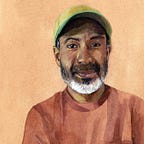Exploring the African Diaspora with Photography
Tony Gleanton is a African-American photographer known for his images of the African Diaspora. Specifically of communities living in Mexico, and all throughout Central and South America. His name will not trigger the muscle memory reaction like that of, say, Ansel Adams. But, the images from his series Tony Gleaton: Africa’s Legacy in Mexico are seminal in showing the connections that African-Americans have with the communities living south of the United States Border.
My Family connection
When I’m not doing payment based photo projects. Like Tony Gleanton. My personal photography narrative is trying to show the connections of the African Diaspora. I too am interested in those communities residing in Mexico, Central and South America. I start with a personal point of view that New Orleans was and still is in many ways. The most northern point of the Caribbean. having connections to all points south. This interest also comes from family relationships. My paternal Grand-Mothers second husband was Afro-Cuban. He had a very dark complexion. Until he spoke you assumed he was an American. As a young kid living in Los Angeles. I always marveled at his ease to switch between English and Spanish. He did not talk much about Cuba. But the things he did share triggered an interest in me. That one day I would need to see for myself where he came from. How could we be so alike? Yet different?
Why is it important?
When you look at the photography of African-American photographers Tony Gleanton, Roy De Carver and Gordon Parks to name a few. They showed how photography could be used to (1) show connections that communities have and (2) counter negative stereotypes. Telling one’s own narrative through visual imagery, not one interpreted from an outsider. Is very powerful. Frederick Douglas understood this fully. A former slave. Documented as the most-photographed person of the 19th Century. He understood the power of photography and how it could be used to fight against the racist imagery of African-Americans at that time.
A Personal Experience
My photography projects have taken me all throughout the Caribbean and countries throughout Central and South America. Starting in 2017 and in subsequent years until the Covid pandemic put a halt on international travel. I was working in Colombia. Before I left at the projects end in 2017. The Director of the non-profit organization, CARABANTÚ — FICCA KuntaKinte, asked me to meet and visit with his mother. Completely unplanned I had worked with a related organization at a school where his mother was once the former principal. He wanted to introduce me and show her the images I’d taken. Prior to going to his mothers home he needed to pick up something at his family’s apartment. It hit me as soon as we walked in. I was stunned! Floored! There I was in a barrio up in the hills above the city of Medellin, Colombia. On the Directors walls were two portraits. One of Martin Luther King. The other of Malcolm X. The connection of the African Diaspora and the importance of seeing yourself in imagery was right in front of me.
Kevin B. Jones
